In this article we analyze a component that is part of a family that is increasingly being used in equipment for domestic, commercial and hospital use. This is the SGP40, a Sensirion air quality sensor, available from Mouser Eletrônics.
VOC sensors are volatile organic gas sensors or Volatile Organic Compound designed to detect flammable gases present in the environment.
Its importance in our days is increasing, because it protects us against leaks of domestic gases or in industrial environments, in hospitals and in many other places.
The working principle of these sensors is in photoionization. Ultraviolet radiation ionizes the gas and then its detection can be done by detecting the level of electrons.
The Senstrion component that we focus on in this article does just that. Designed for digital operation, it can be easily integrated into air purifiers and many other equipment where it is necessary to detect the presence of toxic, flammable, and other gases.
In figure 1 we have the functional diagram of this sensor.
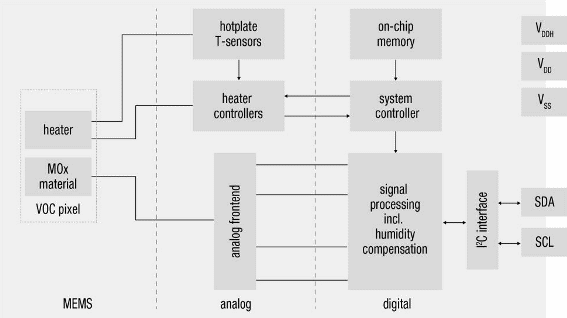
The component is available in a QFN enclosure measuring only 2.44 x 2.44 x 0.85 mm, which facilitates its integration in a small printed circuit board.
In figure 2 we have the housing with its pinout
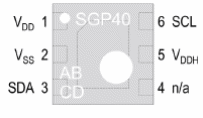
Additional information in the available documentation includes the identification of the functions of each pin.
In the datasheet provided by the link, the reader interested in using this component in a project will find all the information he needs for that. Tables and graphs are given detailing their operation, including the light bands used in the detection.
An important graph found in the documentation is the one shown in figure 3. It shows the sensor's response to different concentrations of ethanol.
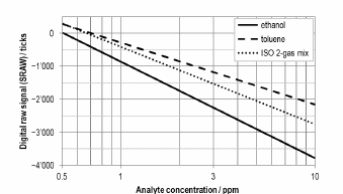
The sensor can operate with supply voltages from 1.7 to 3.6 V, the typical value being 3.3 V. The typical current is 34 uA. The absolute maximums are given in the datasheet.
A typical application circuit is shown in figure 4.
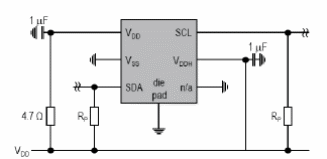
The VOC index measures air quality by analyzing the chemical composition of its behavior considering the emitted light. This is shown in figure 5.
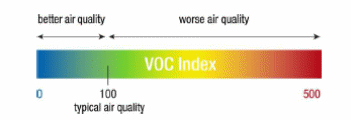
In the datasheet the reader will find additional information.




